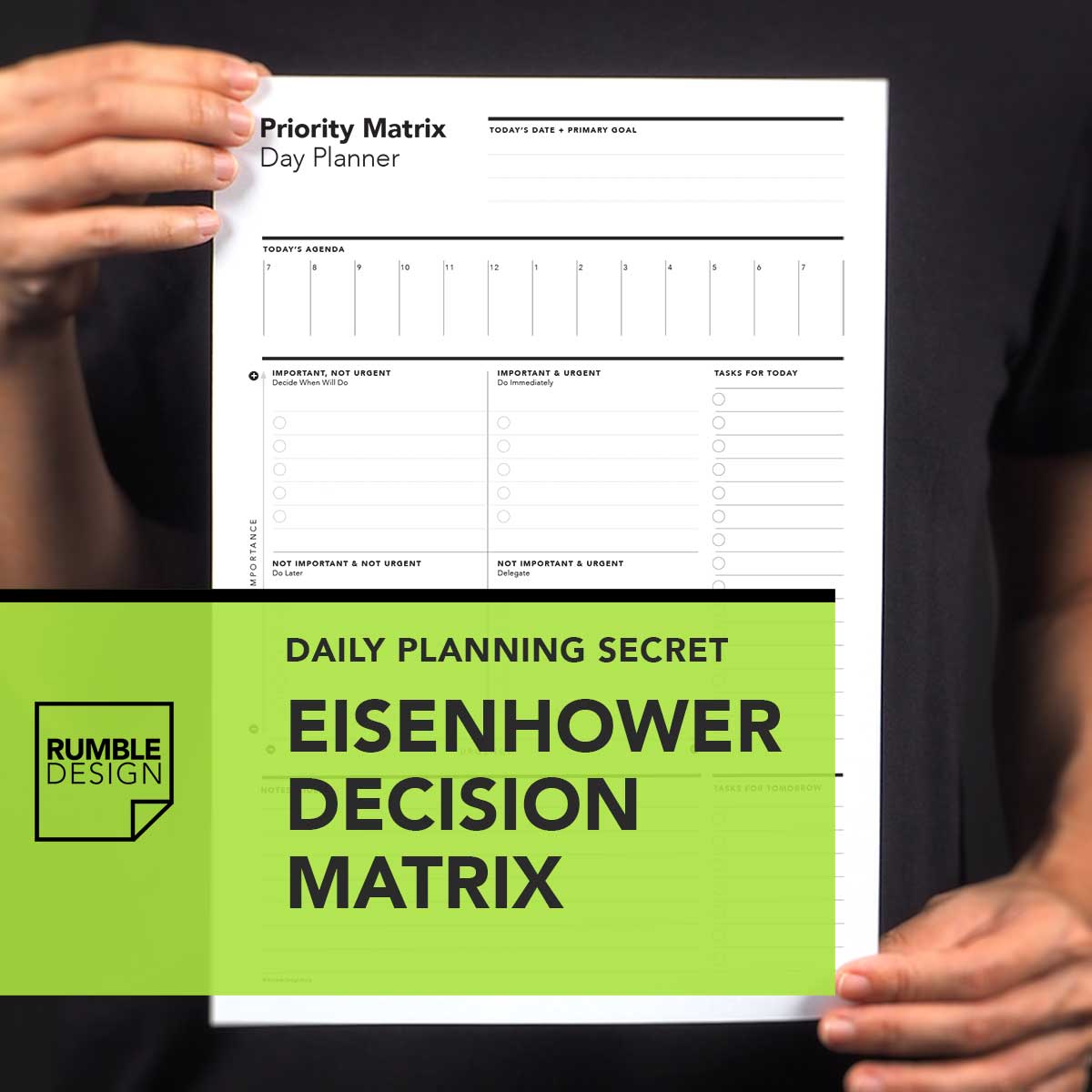
“I have two kinds of problems, the urgent ones, and the important ones. The urgent ones are not important, and the important ones are never urgent”.
This quote from the 34th President of the United States Dwight David Eisenhower has given rise to a particularly effective method of organization. One of the challenges of doing work is the daily planning of where to start to complete specific tasks.
The matrix of Eisenhower, named after the 34th president of the United States (1953-61), makes it possible to determine the importance of things and to eliminate the unnecessary. It was not he who invented it, but it was designed according to his most famous quote. It’s based on a double-entry table to sort the urgency and the importance of your tasks. Here’s how Eisenhower’s decision matrix is useful and how to use it for success planning. Let’s get into it!
What is the Eisenhower Decision matrix?
Eisenhower was an American president of the Fifties who was known for his exceptional productivity. And the decision matrix he used is one of the keys to his effectiveness.
The Eisenhower matrix is simply a way of classifying tasks into 4 categories according to their urgency and importance:
The famous “Eisenhower Decision Matrix”
So we have our 4 quadrants which each represent a task category: These 4 quadrants are:
- Quadrant 1 – Do: Important and urgent tasks (to be done immediately)
- Quadrant 2 – Decide: Important but non-urgent tasks (to be planned)
- Quadrant 3 – Delegate: Non-important but urgent tasks (to be timed)
- Quadrant 4 – Eliminate: Non-important and non-urgent tasks (to be eliminated)

The idea is to take your task list and assign it to each one of the quadrants according to their urgency and their importance.
What is the difference between the important and the urgent?
Important activities allow us to progress in our goals, whether professional or personal. These are long term instead of short goal-oriented tasks. In general, they don’t give you instant results and are more focused on making long-term decisions. For example, we create a healthy lifestyle by doing physical activity or pursuing your passions.
Urgent activities require immediate attention. These critical tasks are the ones that are linked to a time constraint. These tasks have a ‘do it now’ written on them and need your immediate attention. For example, the sale ends in a few days, and I have not made my purchases.
These “urgent” activities require us to take immediate action, such as phone calls, emails, Facebook notifications, and other outside requests can be overwhelming. By knowing how to differentiate between important and urgent activities, you overcome your natural tendency to concentrate on the immediate. That is to say, on these “unimportant but urgent” activities. This allows you to free up time to do what is essential for you.
Ultimately, you are in control to make your professional and personal life more productive and more fulfilled.
How to use the Eisenhower Decision Matrix for Daily Planning
If you are wondering that your life will magically become more organized by using the Eisenhower matrix, it is as easy as it sounds. But of course, it is not impossible, and you can get yourself on track by putting in a little bit of effort.
First off, you need to organize your important and urgent activities. So set your priorities and define your urgency levels. Once you are done classifying the important and urgent tasks, the next step is to use the matrix’s potential for your daily planning.
Assign Color Codes to each Quadrant
To view all your tasks quickly, assign colour codes to each quadrant. Once you assign colours, you can get a quick glance at what tasks needs to be done next. Using these colour codes, you can make informed decisions by prioritizing your tasks. For instance, The ‘Do’ quadrant can be coloured red to point out your task’s urgency.
Categorize Your Personal and Professional To-dos
Create a separate matrix for your personal and professional tasks to avoid over-lapping commitments. This way, you will be clear about what to do ahead and how to manage your time. You can assign separate hours for your personal and professional commitments and see how this will work for you.
Limit the Number of Items per Quadrant
For success planning, try not to add too many items per quadrant; this can complicate things! Moreover, the purpose of using the Eisenhower matrix for daily planning will be lost. So, limit the number of tasks to 6 or 7 and focus on it. This way, you won’t be overwhelmed.
Benefits of Eisenhower decision matrix daily task planning
The Eisenhower decision matrix helps you in your daily task planning and improves your time management. It’s clear, and determined prioritization allows the urgent tasks to be completed first. The matrix is particularly practical for people working in management positions as their time is usually limited, and they can delegate tasks to their teams.
One of the greatest benefits of the decision matrix is that you can apply it to both personal and professional life. It will let you prioritize daily tasks, manage your time, and motivate you to become more productive and balanced within your life. Also, it promotes the delegation and decision-making all at the same time. Furthermore, the element of listing your tasks lets you be realistic, more productive, and be able to step back and look at the bigger picture.
It might seem time-consuming initially to separate “what is urgent?” or “what is important” to “what I can do later?” Look at each of your tasks and ask yourself that question. You will understand the difference with a bit of practice, and you will realize that this method is essential when it comes to improving your daily productivity.
Keep in mind that urgency is a matter of time, while importance is a choice to help yourself manage your work.
Happy planning!




